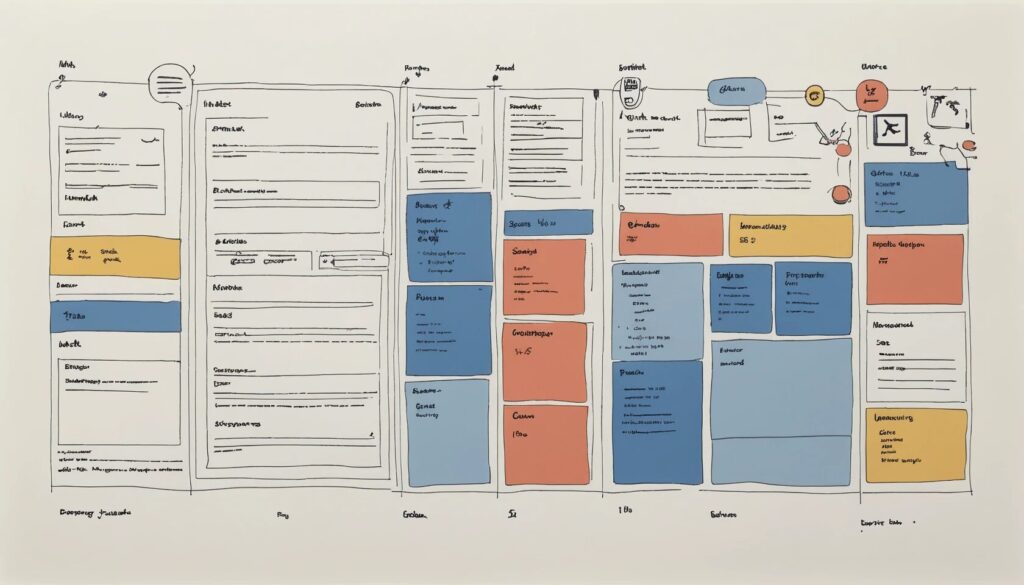The Undeniable Power of UX Research in Product Design
Picture this: You launch a shiny new app, expecting applause, only to be met with frustrated users and scathing reviews. What went wrong? Likely, you skipped a crucial step—user experience research. Designing without UX research is like cooking without tasting; sure, it might look good, but will anyone enjoy it?
UX research isn’t just a fancy industry buzzword—it’s the backbone of successful digital products. By employing proven UX research methods, designers and developers can gather invaluable qualitative and quantitative data, ensuring every decision is based on real user needs rather than gut feelings. From usability testing techniques to A/B testing, these strategies help in improving user satisfaction and making products that people actually love using.
Key UX Research Methods That Drive Success
- Qualitative vs. Quantitative Research – Understanding the difference and when to use each.
- Usability Testing Techniques – Watching users struggle (or succeed) in real-time.
- User Interviews & Surveys – Getting insights straight from the source.
- A/B Testing – Settling design debates with real data.
Qualitative vs. Quantitative Research: A Necessary Balance
UX research comes in two delicious flavors: qualitative and quantitative. Think of qualitative research as the detective work—it dives into user emotions, motivations, and behaviors through interviews, focus groups, and usability studies. It answers the critical question: Why?
Quantitative research, on the other hand, is all about the numbers. Surveys, heatmaps, and analytics track user behavior at scale, answering questions like: How many users abandon the checkout process? By blending both approaches, designers get a full picture—both the “what” and the “why” behind user actions.
Usability Testing Techniques: Watching Users in the Wild
What’s the fastest way to spot a design flaw? Sit back and watch real users try to complete a task. Usability testing techniques expose pain points, helping teams refine interfaces before launch.
- Moderated Testing – A researcher guides users through tasks, collecting real-time feedback.
- Unmoderated Testing – Users interact independently, providing more organic insights.
- Remote Testing – Observing users from afar, ensuring diverse data collection.
By incorporating usability testing into the design process, companies avoid the embarrassment of launching a product that nobody can figure out.
User Interviews & Surveys: The Goldmine of Direct Feedback
No one knows user frustrations better than the users themselves. User interviews allow for deep, personal insights, uncovering pain points that analytics alone might miss. Meanwhile, surveys help validate those insights at scale, ensuring that findings aren’t just based on a handful of vocal users.
Want to make your surveys count? Keep them short, ask clear questions, and avoid leading language. The goal is to extract genuine user opinions, not force them into pre-determined answers.
A/B Testing: When Data Decides the Winner
Ever had a heated debate over whether a button should be blue or red? A/B testing settles these disputes with cold, hard data. By presenting different versions of a design to users and measuring engagement, teams can make informed decisions without endless back-and-forth arguments.
The key to effective A/B testing? Test one variable at a time. Changing five things at once may lead to inconclusive results, leaving you scratching your head instead of celebrating a breakthrough.
How UX Research Directly Improves User Satisfaction
- Fixing Frustrations Before They Escalate – Identifying pain points early prevents costly redesigns.
- Data-Driven Decision Making – Eliminating guesswork leads to better design choices.
- Boosting Engagement and Retention – Smoother experiences keep users coming back.
Neglecting UX research is like ignoring a check engine light—you might get away with it for a while, but disaster is inevitable. When products are built with user insights from the start, they don’t just function; they delight. And delighted users? They stick around, recommend your product, and contribute to long-term success.
The Takeaway: UX Research Isn’t Optional—It’s Essential
Skipping UX research is the fastest way to ensure your product flops. Whether you’re diving into qualitative and quantitative data or refining experiences through usability testing techniques, every decision should be guided by user insights. In the end, improving user satisfaction isn’t just a nice-to-have—it’s the difference between thriving and failing in today’s digital landscape.
So before you launch that next big idea, take a step back. Gather data. Test relentlessly. Because the best products aren’t just designed—they’re researched, refined, and built with real users in mind.
